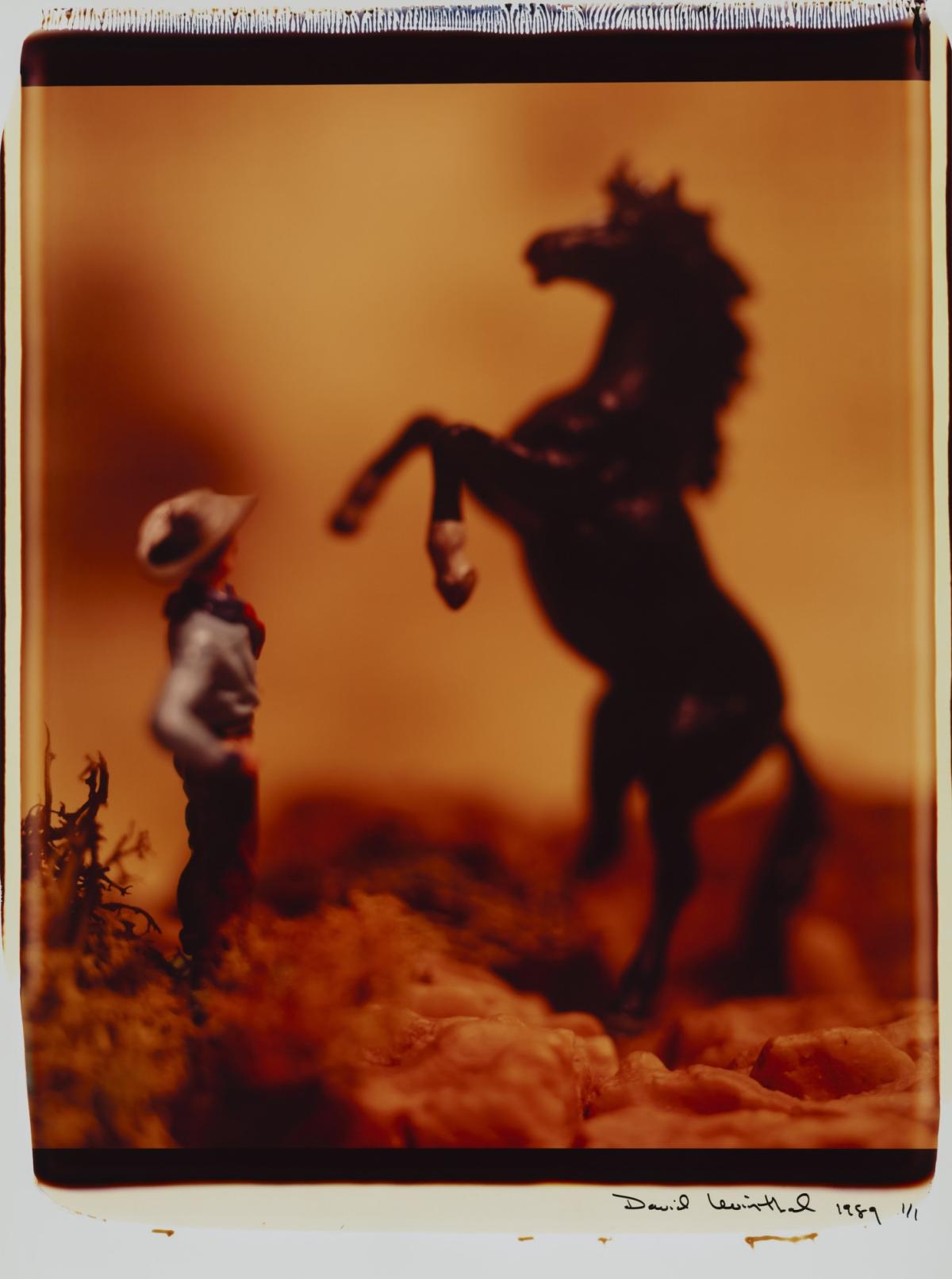It was equally as dreamy as it was exhilarating. This is the message David Levinthal and the curators of American Myth & Memory: David Levinthal Photographs seem to communicate in the "Wild West" section of the exhibition. The dusty ranches and bucking horses create such a compelling narrative that viewers almost forget that the subjects of the photographs are toys.
Almost.
Levinthal has spun a yarn of mythology that believes in itself so deeply that we get tangled up in the story. Enthralling tales of adventure and romance fed to us by the likes of Johnny Cash, Clint Eastwood, and Zane Grey reinforce our perspective of the Wild West as this no-holds-barred duel between good and evil where the cowboy in the white hat wins. Except this is the myth of the Wild West, and Levinthal forces us to remember that—while the action figures can be quite convincing, an inorganic aura surrounds them, making it impossible for us to truly subscribe to their reality. But Ty Murray, a real-life cowboy and Hall of Famer, deconstructs the myth of the Wild West and actualizes the parts he believes to be true:
“I can vouch that you have to be tough to be a good cowboy. I think cowboys and the settling of the West still represent to people toughness, resilience, individualism, hard work, and honesty. I know that the cowboy code has been my guiding light for my entire life.”
The elements of being a cowboy Murray highlights—toughness, resilience, individualism, hard work, honesty—are the alleged building blocks for achieving the American Dream. The American Dream as contextualized by the Wild West speaks to those in rural communities, offering a kind of colloquial hope that is not satisfied by urban works such as The Great Gatsby and Citizen Kane. And unlike The Great Gatsby and Citizen Kane, one of the Wild West’s main tropes is the importance of maintaining one’s honor. Murray’s words inadvertently allude to how the Wild West aided in defining American values and with it, what it means to be American. Americans work long hours, strive to mark themselves as unique through credentials and quirks, and seldom ask for help—in this way, the myth of the West has become an integral influence on the way America functions today. In this way, we all kind of want to be cowboys.
American Myth & Memory: David Levinthal Photographs is on view at the Smithsonian American Art Museum through October 14, 2019. To hear from the artist and the exhibition curator, Joanna Marsh, listen to the Sidedoor podcast.
Shanti Boyle is an intern in the department of External Affairs and Digital Strategies at SAAM.




















